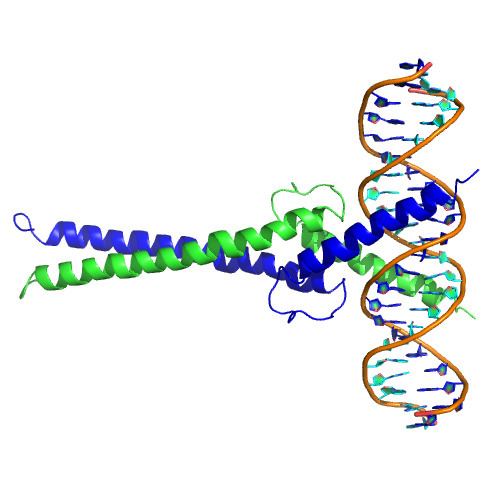Entrez 4149 | Ensembl ENSG00000125952 | |
 | ||
Aliases MAX, bHLHd4, max, MYC associated factor X External IDs MGI: 96921 HomoloGene: 1786 GeneCards: MAX | ||
Protein max also known as myc-associated factor X is a protein that in humans is encoded by the MAX gene.
Contents
Function
The protein max is a member of the basic helix-loop-helix leucine zipper (bHLHZ) family of transcription factors. It is able to form homodimers and heterodimers with other family members, which include Mad, Mxl1 and Myc. Myc is an oncoprotein implicated in cell proliferation, differentiation and apoptosis. The homodimers and heterodimers compete for a common DNA target site (the E-box) and rearrangement among these dimer forms provides a complex system of transcriptional regulation. Multiple alternatively spliced transcript variants have been described for this gene but the full-length nature for some of them is unknown.
Max binds to itself and to other transcription factors through its leucine zipper to form homo- and hetero-dimers respectively. Max itself lacks a transactivation domain so that Max homodimers have a repressive function. In contrast, Myc contains a transactivation domain but cannot homodimerize. However Myc can heterodimerize with Max to form heterodimers that can both bind DNA and transactivate. The transcriptionally active Max/Myc dimer promotes cell proliferation as well as apoptosis.
Interactions
MAX (gene) has been shown to interact with:
Clinical relevance
This gene has been shown mutated in cases of hereditary pheochromocytoma. More recently the MAX gene has been shown to be mutated also in small cell lung cancer (SCLC). This is mutually exclusive with alterations at MYC and BRG1, the latter coding for an ATPase of the SWI/SNF complex. It was demonstrated that BRG1 regulates the expression of MAX through direct recruitment to the MAX promoter, and that depletion of BRG1 strongly hinders cell growth, specifically in MAX-deficient cells, heralding a synthetic lethal interaction. Furthermore, MAX required BRG1 to activate neuroendocrine transcriptional programs and to up-regulate MYC-targets, such as glycolytic-related genes.
